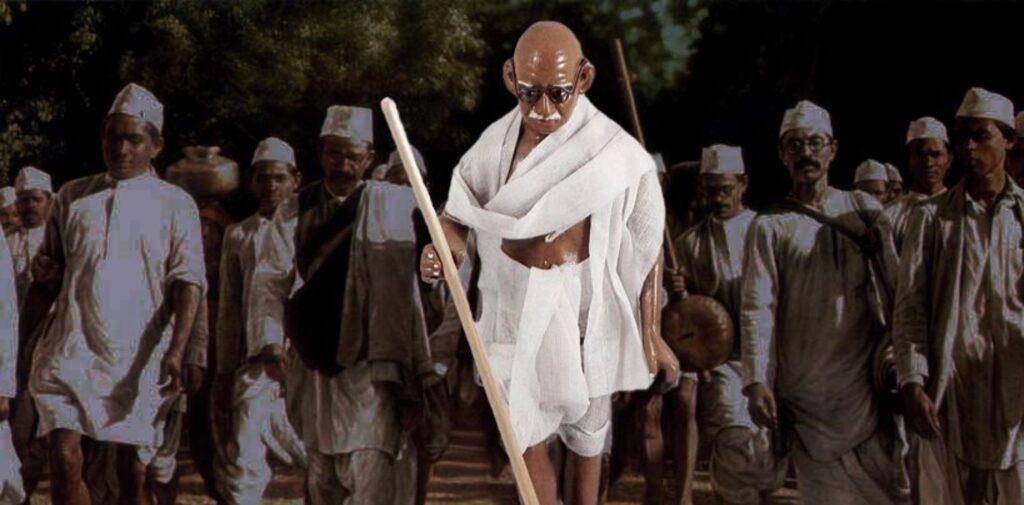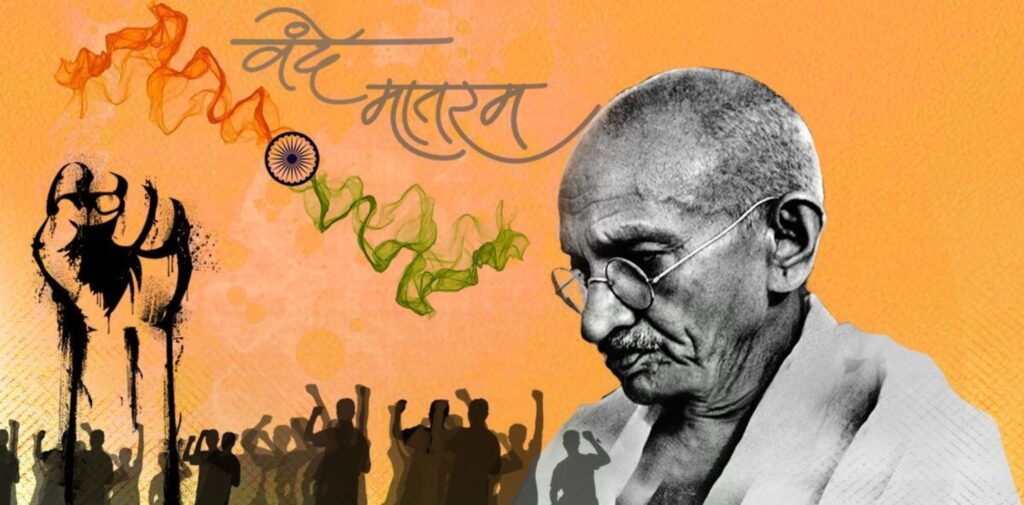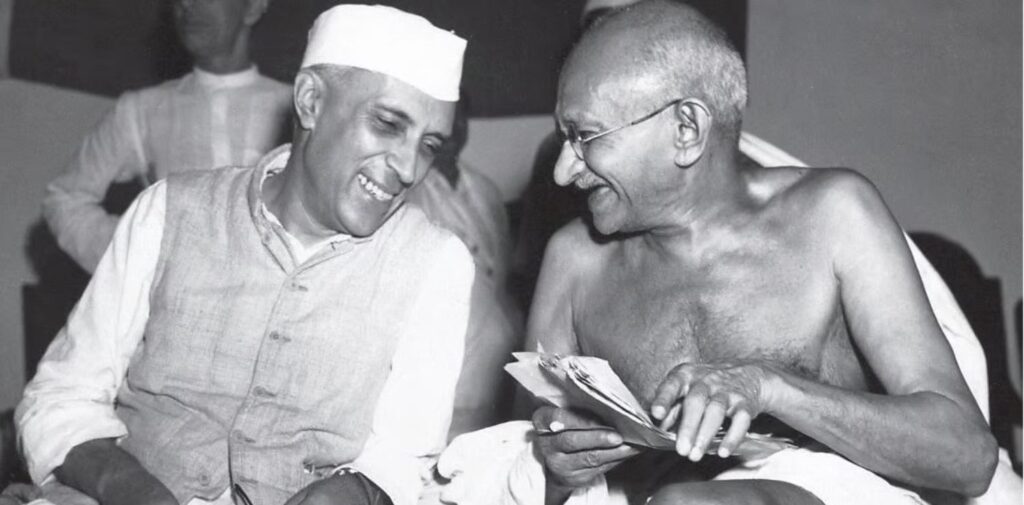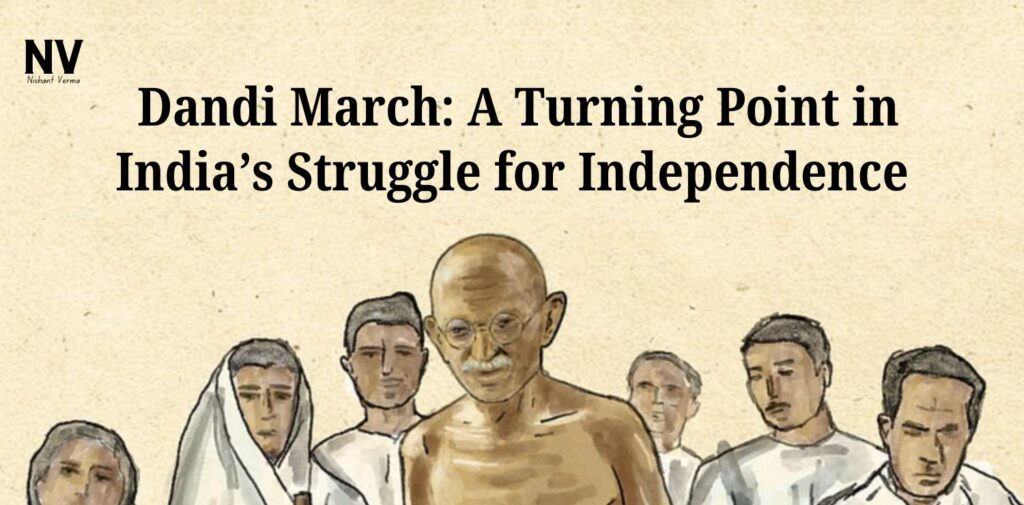The Dandi March, led by Mahatma Gandhi in 1930, is one of the most iconic events in the history of India’s struggle for independence. The march, which saw Gandhi and his followers walking approximately 240 miles to make salt from the sea, was a direct challenge to British colonial rule and the unjust Salt Tax. While this event is often celebrated as a symbol of non-violent resistance and national unity, it is important to take a deeper look at the broader context surrounding it. The reality of the Indian independence movement and the roles of figures like Gandhi and Jawaharlal Nehru can sometimes be more complicated than what is traditionally taught.
This article will explore the significance of the Dandi March and also critically examine the roles of Gandhi and the Nehru family, questioning whether their actions were truly in the best interests of the Indian people.
The Dandi March: A Symbol of Resistance
In 1930, the British government had imposed a salt tax that made it illegal for Indians to produce or sell salt independently. Salt, a basic necessity for everyone, was heavily taxed, and this policy affected millions of poor Indians who had no access to affordable salt. Mahatma Gandhi, with his philosophy of non-violent resistance or satyagraha, saw this as an opportunity to launch a mass movement against British rule.
Gandhi’s Dandi March began on March 12, 1930, from Sabarmati Ashram in Ahmedabad, with the aim of reaching the coastal village of Dandi, where he would make salt from seawater as an act of defiance. The march, lasting over 24 days, was a remarkable feat of physical endurance and also a powerful act of protest against British colonial policies. Thousands of people, including men, women, and children, joined Gandhi on this march, and it soon became a symbol of India’s resolve to break free from British oppression.
The Dandi March succeeded in gaining global attention and marked the beginning of a widespread civil disobedience movement across India. The British authorities, who had always underestimated the power of Gandhi’s methods, were forced to respond with repression. Many Indians, including Gandhi, were arrested, but the movement had already gained momentum and spread like wildfire throughout the country.

The Role of Gandhi and Nehru: A Complicated Legacy
While the Dandi March is often hailed as a monumental step in the struggle for independence, it is important to examine the roles of the key figures involved—especially Gandhi and the Nehru family. Although they are celebrated for their leadership, their actions and motivations during the independence movement raise significant questions about their true intentions and whether their leadership benefited the broader Indian populace.
Gandhi’s Leadership and Its Limitations
Mahatma Gandhi is often regarded as the father of the nation and the central figure in India’s independence movement. His philosophy of non-violence and his leadership during the Salt March are praised worldwide. However, some critical aspects of Gandhi’s approach to the struggle for independence have been overlooked.
Gandhi’s idealism often led him to focus on moral victories rather than practical, tangible outcomes for the Indian people. While his insistence on non-violence was noble, it also limited the ways in which the Indian freedom struggle could mobilize large sections of society, particularly those who were ready to take more direct action against British rule. His emphasis on moral high ground, while admirable in theory, did not always translate into immediate or meaningful progress for the Indian masses.
In addition, Gandhi’s vision for India after independence was shaped by his belief in rural self-sufficiency, which led him to overlook the growing importance of urban industrialization. His emphasis on spinning khadi (hand-woven cloth) and his push for agrarian self-reliance ignored the need for modernization and industrial development, which were essential for a newly independent nation to thrive in a global economy. This narrow focus on rural values, while commendable in certain respects, ultimately led to a situation where India’s industrial growth was stunted, leaving the country vulnerable to economic challenges in the years following independence.

Nehru and the Nehru Family’s Role in the Struggle
Jawaharlal Nehru, who would later become India’s first Prime Minister, was another key figure in the Indian independence movement. Nehru was a more modern and forward-thinking leader compared to Gandhi, and he championed industrialization, education, and science as key pillars for a new, independent India. However, Nehru’s leadership was not without flaws, and his approach to independence often clashed with the needs and desires of the common people.
Nehru’s relationship with Gandhi was complicated. While Gandhi is credited with being the leader of the Congress and the voice of Indian nationalism, Nehru’s political ambitions were always clear. Nehru’s rise to power within the Congress Party, largely facilitated by Gandhi’s support, was not simply due to his ideological alignment with the freedom struggle but also due to his family’s influence and his own political maneuvering.
Nehru, the son of the prominent Motilal Nehru, belonged to an elite, land-owning family that had a vested interest in maintaining their power and privilege, even after independence. This context of privilege meant that Nehru and his family were less connected with the struggles of the average Indian, particularly the rural poor, whom Gandhi tried to represent.
Despite Nehru’s insistence on creating a secular and modern India, his policies often disregarded the socio-economic realities of the majority of the population. His government pursued large-scale industrialization at the expense of rural development, and the emphasis on central planning often alienated farmers and rural communities. Nehru’s vision of a modern, industrial India was ambitious but did not consider the economic disparity and social inequities that would arise in the wake of these reforms.

Were Gandhi and Nehru the True Heroes of Independence?
While Gandhi and Nehru are often viewed as the central figures of the Indian freedom movement, it is essential to critically assess whether they were truly the best representatives of the Indian people.
- Gandhi’s Disconnect with the Masses: Gandhi’s focus on moral resistance and non-violence, although inspiring, alienated many who were eager for a more radical change. His insistence on non-violent methods often led to inaction, allowing the British to maintain their control for longer than necessary. Gandhi’s idealism did not always account for the practical needs of India’s struggling masses.
- Nehru’s Elite Background: Nehru’s policies, though well-intentioned, were shaped by his privileged background and his close ties with the British elite. His industrialization plans benefited the upper classes and left the majority of the population in poverty. His failure to address the plight of farmers and rural workers left a lasting impact on India’s agrarian communities.
- The Dandi March’s Limited Impact: While the Dandi March was a powerful symbol of resistance, it did not achieve the immediate goal of independence. It was only one step in a larger movement that involved various leaders, including those who did not share Gandhi’s ideals. The Salt March, while historically significant, was not the primary cause of India’s freedom—it was a collective effort involving numerous other activists, movements, and uprisings that finally led to British withdrawal from India in 1947.
Conclusion: A Different Narrative
The Dandi March, while a key moment in India’s struggle for independence, should not be seen through the lens of blind hero worship of Gandhi and Nehru. Their actions, though important, often did not fully align with the needs and struggles of the Indian masses. Gandhi’s idealism and Nehru’s elitism ultimately shaped policies that did not always benefit the poor and rural populations of India.
In a deeper analysis, it becomes clear that India’s independence was not the product of a single leader or family. It was the result of the collective effort of millions of ordinary Indians—farmers, workers, women, and students—who fought tirelessly for their country’s freedom. While Gandhi and Nehru played important roles, their leadership and policies should be scrutinized and understood within the broader context of India’s complex and diverse independence movement.
India’s freedom was earned by the people, not just by a select few.




